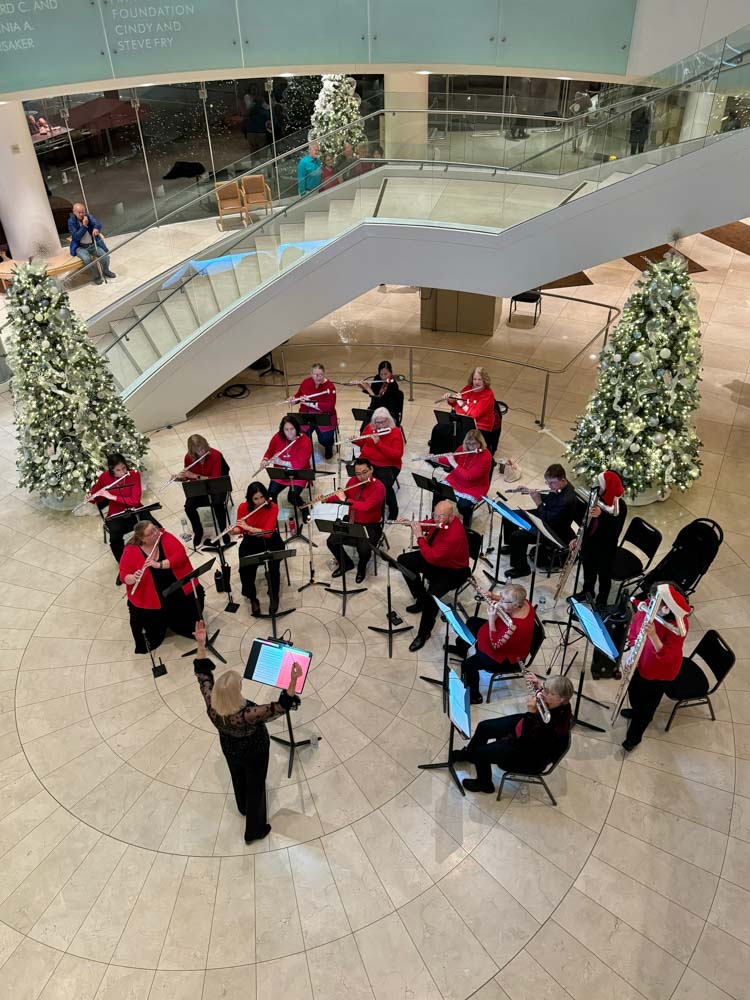Seating in Flute Choir: How we set up
 It’s taken me a few years to finally settle in on a seating plan that maximizes the sound of Laguna Flutes. Currently, we use a three row set up, as our enrollment settles in at about 18-23 players each session. I usually run two sessions per year. Fall session begins in early October, working toward Christmas concerts. Spring session begins about 10-12 weeks prior to our spring concerts. Each session includes 2 performances at different venues.
It’s taken me a few years to finally settle in on a seating plan that maximizes the sound of Laguna Flutes. Currently, we use a three row set up, as our enrollment settles in at about 18-23 players each session. I usually run two sessions per year. Fall session begins in early October, working toward Christmas concerts. Spring session begins about 10-12 weeks prior to our spring concerts. Each session includes 2 performances at different venues.
If we work towards a large goal of NFA convention, for example, then I’ll run two additional sessions; one to prepare for recording dates for acceptance, and the second session with a concert right before we leave for the convention itself.
I prefer a seating plan that favors a balanced sound, which ultimately requires favoring to the low flute sections. Additionally, I enjoy the ‘orchestral’ seating of principal first flute front row, left (like a concertmaster)…principal second flute immediately to her left, then the two first alto flute players. Rounding out the first row are 2 bass flutists. This way, you have all four principal voices in the front row, with lower voices to the right, just like the cello and bass sections in an orchestra which are seated on the right side of the orchestra.
Our second row begins with the solo piccolo chair, then one additional first flute, one additional second flute and second alto flutes. Our Contrabass flute section (two players) complete the second row, and I ask them to move as far forward as possible to create good sonic contact with the 2 bass flute players.
Our third row consists of additional second, third, and fourth C flutists. I try to seat stronger players on a part next to less experienced players to provide leadership and security. I always ask that my group sit as close together, front to back and side to side as possible so that they can hear across the group and experience the full depth of sound front to back. They are always surprised how much better they can hear each other by coming a little closer together!
One of the most consistent compliments I receive about our group is that it is well balanced and you can hear inner voices. I believe this seating plan provides an excellent portal to a full spectrum of tonal possibilities in today’s flute ensemble. The photo below shows a good idea of our concert seating.
